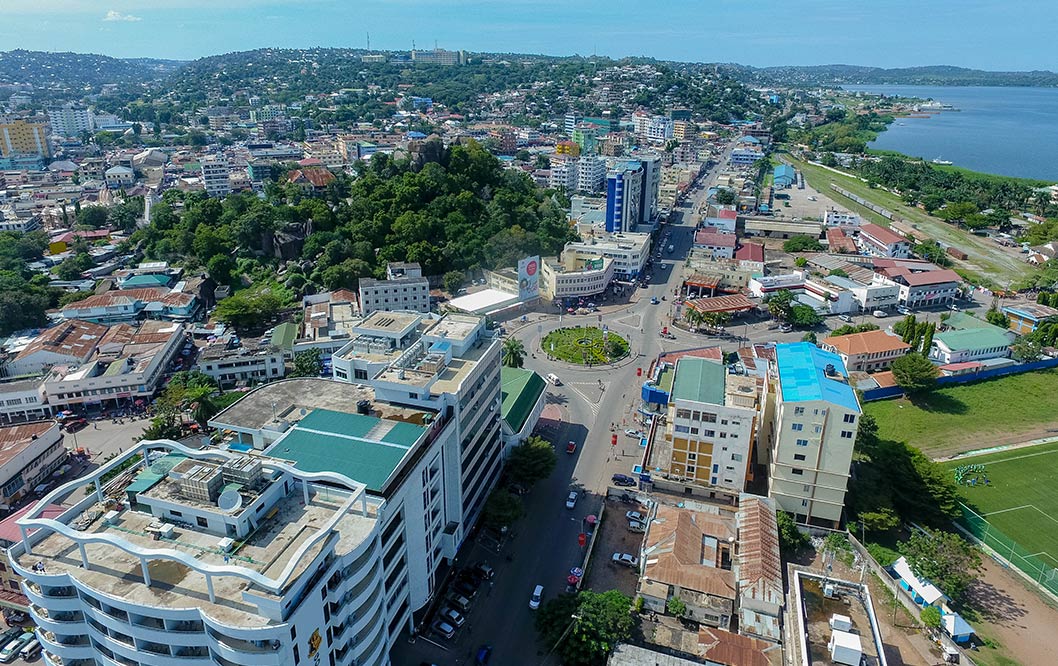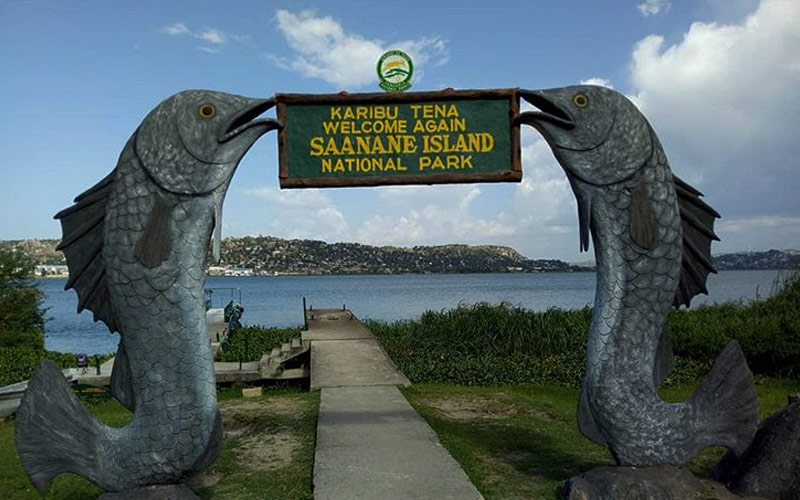Mwanza City, popularly called Rock City by locals, is a port city and the seat of the Mwanza Region, which is located on the southern bank of Lake Victoria in northwestern Tanzania. It is Tanzania’s second-largest city after Dar es Salaam. In terms of population, it is the second largest city in the Lake Victoria basin, after Kampala, Uganda, and ahead of Kisumu, Kenya. Mwanza is the fifth largest city in East Africa, behind Dar es Salaam, Nairobi, Mombasa, and Kampala. In terms of population within city limits, it is slightly ahead of Kigali, Kisumu, and Bujumbura. Kigali and Kisumu, on the other hand, are much ahead of Mwanza in terms of infrastructure.

Mwanza City is also the capital of the Mwanza Region, which is divided administratively into two municipal districts: Ilemela and Nyamagana. Mwanza, a flourishing port city on Lake Victoria, is a convenient base for Tanzania safaris to adjacent Rubondo Island, the western Serengeti, and the Ngorongoro Crater. In addition, Mwanza is home to Saanane National Park, Tanzania’s smallest park, which is located in the city center. The setting on the banks of Lake Victoria is stunning. Natural beauty, food, and vital activities are all provided by this massive freshwater lake.
MWANZA POPULATION
The Mwanza Region had a population of 2,772,509 according to the 2012 national census. The region’s average yearly population growth rate of 3.0 percent from 2002 to 2012 was the sixth highest in the country. With 293 people per square kilometer, it was likewise the sixth most densely populated region.

THE MWANZA CULTURE
The Sukuma, Wakerewe, Wakara, and Wazinza are among the four tribes that inhabit the Mwanza region. Even some of the cities have a cultural heritage, such as Makongoro Road in Mwanza which was named for a renowned Sukuma chief who ruled the area in the late 1800s.
Apart from the four tribes in Mwanza, the Sukuma tribe is the largest tribe in Tanzania, occupying the Mwanza Region as well as the Shinyanga, Geita, and Simiyu areas, implying that Sukuma is found practically everywhere in Tanzania and may be the largest tribe in the country.
MWANZA ECONOMY
The Furahisha Bridge in Mwanza symbolizes people’s transportation and safety. This has provided inhabitants with a safe haven, and it serves as a remarkable icon of Mwanza.
The City Council stated in 2011 that a substantial commercial development would be built in the Ilemela District. The Rock City Mall construction project was completed in early 2016. This is Mwanza’s first large shopping mall and one of the country’s largest.
Mwanza City, which is located on the southern shores of Lake Victoria, has become the primary economic hub in western Tanzania, drawing large fish processing and mining enterprises. Fishing and mining are the main sources of income for the people of Mwanza. It has 13 fish processing units with a total installed capacity of 1,065 tonnes of fish per day. Mwanza’s other economic development activities, following mining and fishing, are agriculture and cattle.
TOURISM IN MWANZA/TOURISM ATTRACTIONS
Apart from Tanzania city tours, Mwanza, Tanzania’s second largest and most beautiful city, is gifted with additional excellent attractions that will make visitors’ vacation unforgettable. One of the attractions is Saanane Island National Park, Tanzania’s smallest park, which is situated on a rocky island in Lake Victoria, 500 meters from Mwanza’s Capri Point.
- Saanane Island National Park.
Saanane Island, Tanzania’s smallest national park, has been a fully-fledged national park since July 2013, encompassing an area of 2.18 sq. km and consisting of three islets and an aquatic environment. The park sits 2 kilometers southwest of Mwanza city center, on the shores of Lake Victoria’s Gulf.
The park set a record for being the first national park in the world to be located within a city, as well as the smallest national park in Tanzania and East Africa. Impala, Rock Hyrax, Velvet Monkeys, and Wild Cats are among the species that call the park home. Crocodiles, Monitor Lizards, Agama Lizards, Pancake and Leopard Tortoises, and snakes, particularly Pythons, are also common.
Saanane Island can be reached by taking a 5-minute boat ride from the Park Offices on the mainland. The Park Offices are conveniently located around a 15-minute walk from the city center. This beautiful island is perfect for wildlife viewing, bird watching, rock hiking, boat cruises, walking, picnics, bush lunches, photography, filming, meditation, and sport fishing. In this city center park, special occasions such as weddings, engagements, team building, family days, and birthdays can be held.

- The Lake Victoria
Lake Victoria is Africa’s largest lake, with a surface area of 68,800 sq km. It’s also the world’s largest tropical lake and second-largest freshwater lake. It is a must-see attraction in Tanzania, particularly in the city of Mwanza. Lake Victoria is vital to the inhabitants of Mwanza as well as the country’s economy since it supplies fish.
- Ukerewe Island
With an area of over 530 km2, Ukerewe is the largest island in Lake Victoria and Africa’s largest inland island. Ukerewe Island is located in the Ukerewe District, about 50 kilometers north of Mwanza, and it takes 3 to 4 hours to get there by ferry. Ukerewe Island’s shoreline is sculpted into multiple bays, and it is ringed by over a quarter-dozen smaller islands.
The few proper sights on Ukerewe Island include agricultural operations, such as maize, sweet potatoes, millet, cassava, and rice farming, as well as fishing, which is the main activity here.
Expect to observe a variety of tourism activities on Ukerewe Island, such as the Ruby Forest, which is the district’s largest forest. It is a serene location with a wonderful setting. A fishing-activity area and a natural beach on Lake Victoria are also included within the forest’s boundaries.
Rutale Hill, located on Ukerewe Island in the Mwanza region, is another tourist site. To enhance your Mwanza experience and expectations, climb Rutale Hill, which is wonderful for viewing the panorama of Ukerewe.
- Sukuma museum
The Sukuma Museum, located in Bujora, slightly east of Mwanza near Kisesa, is well worth a visit for those interested in Mwanza’s history and culture. It presents an overview of the Sukuma tribe’s history, architecture, culture, and language, which is where the majority of the native population comes from.
GETTING TO MWANZA/ HOW TO ACCESS MWANZA
Mwanza may be reached by a variety of modes of transportation, including air, boat, train, and road. It is up to you to decide which mode of transportation is best for you and find a better way to go to this lovely second city in Tanzania.
Air transport
Mwanza Airport, which is classed as a regional airport, serves Air Mwanza. Air Tanzania and Precision Air fly from Moshi (Kilimanjaro international airport) to Mwanza. On the other hand, Precision Air operates daily flights to Mwanza, including from Nairobi (via Kilimanjaro). Mwanza can also be reached by air from any area or city in Tanzania, as there are numerous airline flights to Mwanza.
By railway transport
Shinyanga, on a branch of Tanzania’s Central Railway, is connected to the city via train. Mwanza city is reached by train from Dar es Salaam via Dodoma, Tabora, and Kigoma. Dar es Salaam’s trains these are frequently fully booked up to 2-3 weeks ahead of time. However, don’t expect a relaxing train ride because the pace is usually slower than average.
By road transport
The major and largest bus station in the Mwanza region, Nyegezi bus station, is located in Nyamagana district. Luxurious buses to Mwanza are available from all regions of Tanzania. From Nyegezi bus station, buses go to the south and west of Tanzania.
The Buzuruga bus station is located in the Ilemela district. Buses depart from Buzuruga bus station for the east, the north, and the Kenyan border.
Buses run to and from Dar es Salaam on a daily basis. Several transportation firms, like Green Star, Princess Muro, Allyz Star, and others, are among the best and most dependable options. The trip from Dar es Salaam, the northern cultural and trade capital, to Mwanza takes roughly thirteen hours. From and to mwanza, Daily buses go to Bujumbura (Burundi), Kigali (Rwanda), Nairobi (Kenya), and Kampala (Uganda).
By water transport
To get there from Uganda, take a bus from Kampala to Bukoba (in Tanzania), and then either take the ferry or the bus from Bukoba on Monday, Wednesday, or Friday evenings (several every day around 6-7 AM).
GET AROUND TO MWANZA
Daladalas (public “buses”) are a convenient and inexpensive means of travel between the city and its environs. They are busy, slow, and thrilling at times, yet only cost 300 Tsh for a journey.
Taxis are available, albeit they do not have the same official labels as in the capital. You are using this at your own risk.
Pikipikis are motorcycles that can accommodate one or two passengers. When compared to Daladala, there are always a few sitting at the crossroads. They are not cheap, but they are quick. Use it at your own peril, once again.
WHERE TO STAY IN MWANZA? / ACCOMMODATION IN MWANZA
Mwanza, Tanzania’s second-largest city, offers a variety of unique lodging options for you to enjoy your evening. There are options for luxurious, mid-range, and standard lodging. The following are some of the most magnificent lodges and hotels where you can stay when visiting this incredible city.
- Malaika beach resort
- Gold crest hotel
- Adden palace hotel
- The lahe hotels
- Hotel tilapia
- Ryan`s bay hotel
- New mwanza hotel
- Samanene beach hotel
- Isamilo lodge
- Belmont Fairmount hotel
- Busybee cabin


